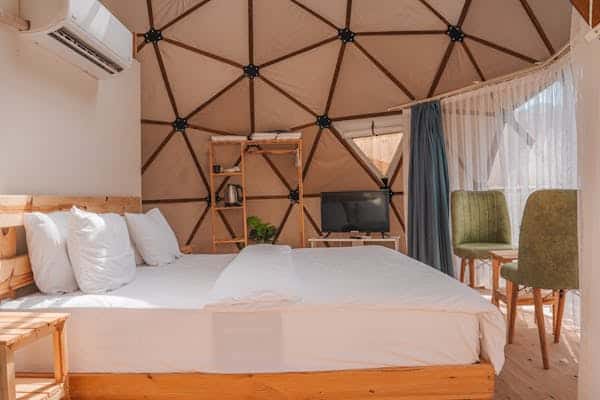People search for ways to stay cool in hot weather. Spilt klimaanlage typen conditioners provide a good option. This guide covers the types of split air conditioners. Readers find details on each type. The post helps choose the right one for homes or offices.
What Is a Split Air Conditioner?
A split air conditioner consists of two units. One unit sits inside the room. The other unit stays outside the building. Pipes connect these units. The indoor unit cools the air. The outdoor unit releases the heat. This system differs from window units. Window units fit in one piece. Split systems avoid ducts in most cases. Installers set them up without major changes to walls. Many call them ductless mini splits when they serve small areas.
Split air conditioners save energy. They cool specific rooms only. Users control the temperature with remotes. The setup runs quiet because the noisy compressor stays outside.
Different Types of Split Air Conditioners
Various types meet different needs. Each type fits certain spaces. People select based on room size and layout.
Wall-Mounted Split AC
Wall-mounted units hang on the wall. They suit bedrooms or small offices. The unit blows air directly into the room. Installers place the indoor unit high on the wall. It covers areas up to 500 square feet. Users adjust the fan speed.
Pros of Wall-Mounted Split AC
This type costs less than others. People install it fast. The unit cleans air with built-in filters. It uses little space on the floor. Users reach the controls easy. The system cools rooms quick.
Cons of Wall-Mounted Split AC
The unit shows on the wall. It may not fit rooms with low ceilings. Air flow misses corners in large spaces. Maintenance needs ladders. Pipes run along walls. Some find the look not modern.
Ceiling Cassette Split AC
Ceiling cassette units fit into the ceiling. They spread air in four directions. Offices and shops use them often. The unit hides behind ceiling tiles. It covers larger areas than wall types. Air flows even across the room.
Pros of Ceiling Cassette Split AC
This type saves wall space. It cools big rooms well. The hidden design looks clean. Users get uniform cooling. The system handles high ceilings. It works in open floor plans.
Cons of Ceiling Cassette Split AC
Installation costs more. Workers need access to the ceiling. Repairs take time. The unit needs strong support. Dust collects if not cleaned. It fits less in small homes.
Floor-Standing Split AC
Floor-standing units stand on the ground. They work in rooms without wall space. Basements or halls use them. The unit blows air from the bottom. It moves easy if needed. Pipes connect to the outdoor unit.
Pros of Floor-Standing Split AC
This type fits tight spots. Users move it between rooms. It cools low areas well. Installation skips wall drilling. The unit stands stable. It handles uneven floors.
Cons of Floor-Standing Split AC
It takes floor space. The look stands out. Air flow stays low in tall rooms. Cleaning needs bending down. Cables show on the floor. It costs more than wall types.
Ducted Split AC
Ducted units hide in the ceiling. Ducts carry air to multiple rooms. Homes with many areas choose them. The system acts like central air. It cools the whole house. Vents blend into rooms.
Pros of Ducted Split AC
This type stays out of sight. It covers large homes. Users set one temperature for all. The system filters air for the house. It adds value to properties. Quiet operation helps sleep.
Cons of Ducted Split AC
Installation takes longer. Costs rise with ducts. Repairs need ceiling access. Energy loss happens in ducts. It fits less in old homes. Dust builds in pipes.
Multi-Split AC
Multi-split systems connect one outdoor unit to many indoor units. They cool several rooms. Families pick them for homes. Each room gets its own control. The setup saves outdoor space. Users set different temperatures.
Pros of Multi-Split AC
This type uses one compressor for all. It saves energy in big houses. Installation needs fewer outdoor spots. Rooms stay independent. The system expands easy. It fits apartments well.
Cons of Multi-Split AC
Costs more upfront. Pipes run longer. One outdoor failure affects all. Sizing needs care. Efficiency drops if overused. Repairs cost high.
Benefits of Split Air Conditioners
Split systems run efficient. They use less power than old units. Users pay lower bills. The setup improves air quality. Filters catch dust and allergens. People breathe better. Installation happens quick. No big renovations occur. Homes stay intact. They operate silent. Outdoor noise stays away. Sleep comes easy at night. Flexibility stands out. Types fit any space. Users pick what works.
How to Choose the Right Split AC
Measure the room size first. Calculate BTU needs. Small rooms need 9000 BTU. Check energy ratings. Look for high SEER numbers. They save money long term. Consider the layout. Wall space picks mounted types. Ceilings suit cassettes. Think about budget. Wall units cost low. Multi-splits run high. Assess installation. Pros handle pipes. DIY risks leaks. Review noise levels. Quiet units fit bedrooms. Check decibel ratings. Look at features. Remotes and timers help. Smart controls add ease. Talk to experts. They suggest based on home. Get quotes from many.
Maintenance Tips for Split AC
Clean filters monthly. Remove dust with water. Dry them before use. Wipe indoor units. Use soft cloth. Avoid harsh chemicals. Check outdoor units. Clear leaves and dirt. Keep space around free. Inspect pipes yearly. Look for leaks. Call pros if wet. Run the system regular. Prevent mold growth. Use fan mode sometimes. Schedule pro checks. They clean coils. Refill gas if low. Change settings seasonal. Adjust for weather. Save energy. Monitor power use. Spikes mean issues. Fix early.
Conclusion
Split air conditioners offer many types for cooling needs. Wall-mounted works for small rooms. Multi-split handles homes. Each type brings benefits like energy savings. Maintenance keeps them running well. Choose based on space and budget. Consult experts for the best fit. This guide helps make smart choices.
Frequently Asked Questions
What makes split AC different from window AC?
Split AC uses two units for quiet operation. Window AC fits in one spot but makes noise.
Do all split AC need ducts?
Most skip ducts for easy setup. Ducted types use them for whole homes.
Can people install split AC alone?
Pros install to avoid risks. They connect pipes safe.
How often clean split AC filters?
Clean every month for best air. It keeps cooling strong.







